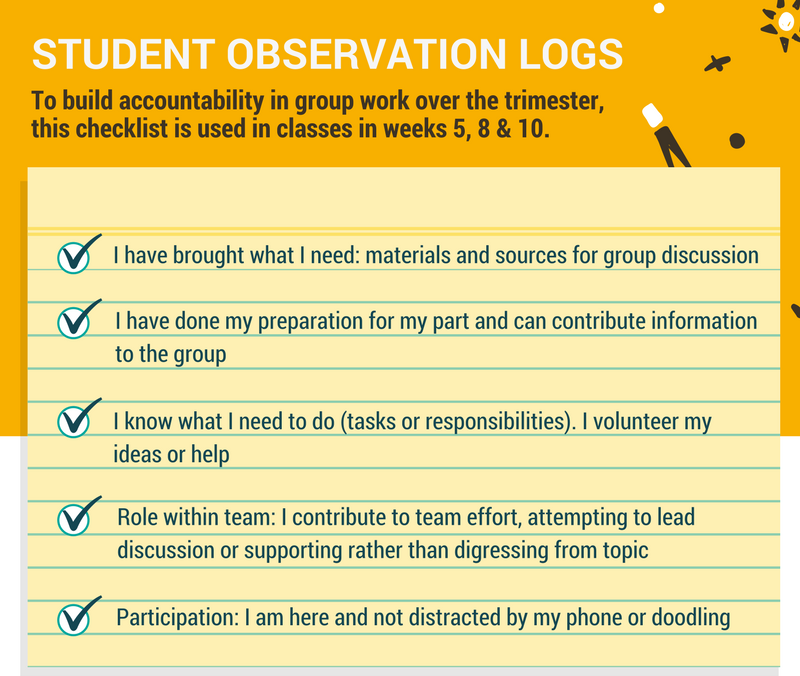Making groups work: Embedding team engagement in assessment
Editor’s note: This post was originally published on 25 July 2017.
In theory, group work is an effective way to develop skills such as collaboration and teamwork. But if you hear student opinions, the consensus is that group work – well, it sucks. Students rarely feel comfortable raising issues with their teacher, so diligent students are forced to make up for group members who aren’t contributing sufficiently.
To discourage the ‘free-ride’ phenomenon, encourage genuine participation and open up conversations about how groups are working together, we developed a simple observation-based assessment. It provides some measure of individual input and helps to encourage accountability.
A model for in-class observation
In our Communication Skills unit, a checklist of desired group work behaviours is used three times throughout the trimester. It aims to provide an objective measure of student contribution – not achievable through individual or peer assessment – based on simple, quick to mark observation competencies, so as not to add to teacher workload. The checklist identifies very clear criteria so that students know what is required in order to succeed.
To give students time to reflect on their participation in a group effort and gradually learn to be more accountable, observations occur during weeks 5, 8 and 10.
Here is the criteria used to observe students working in their groups:

A shift in group dynamics
The marks students can gain from these observations are relatively small, usually set at 5-15 that eventually contributes to 5% of their final mark, but the process itself is effectively improving the dynamics of group work.
The early and repeated use of a checklist has helped open up room for discussion about group members who aren’t contributing and talk about the behaviours that need to be improved. Getting students to buy into the group work is much easier when they can see the checklist and watch a mark being given (or not given) for each item. In the past, verbal reminders of students’ responsibilities to their group tended to be ineffective and quickly forgotten.
As you can see in the ‘Before’ and ‘After’ summary below, group work has become a more pleasant experience for our students. Students are happy to see a standard score for the group becoming an individual score that is more reflective of the amount of work they each put in. The observation logs have reduced students’ feelings of anger and frustration at the institution about unfair group work, by making it easier to approach individuals who may not be actively contributing.

If you’re interested in adding similar scaffolding to your group projects or group work, you can download a copy of our in-class observation log. The revised Student Observation Log (SOL) is more task specific to include completion of certain sections as the students progress towards writing a final report.
To continue the conversation about improving group work dynamics, contact Bronwyn Mortimer and Renuka Pathmasuntharam, or share your thoughts and ideas via Yammer, Twitter or LinkedIn. Have you designed group work that students really engage with? Come and get involved!
